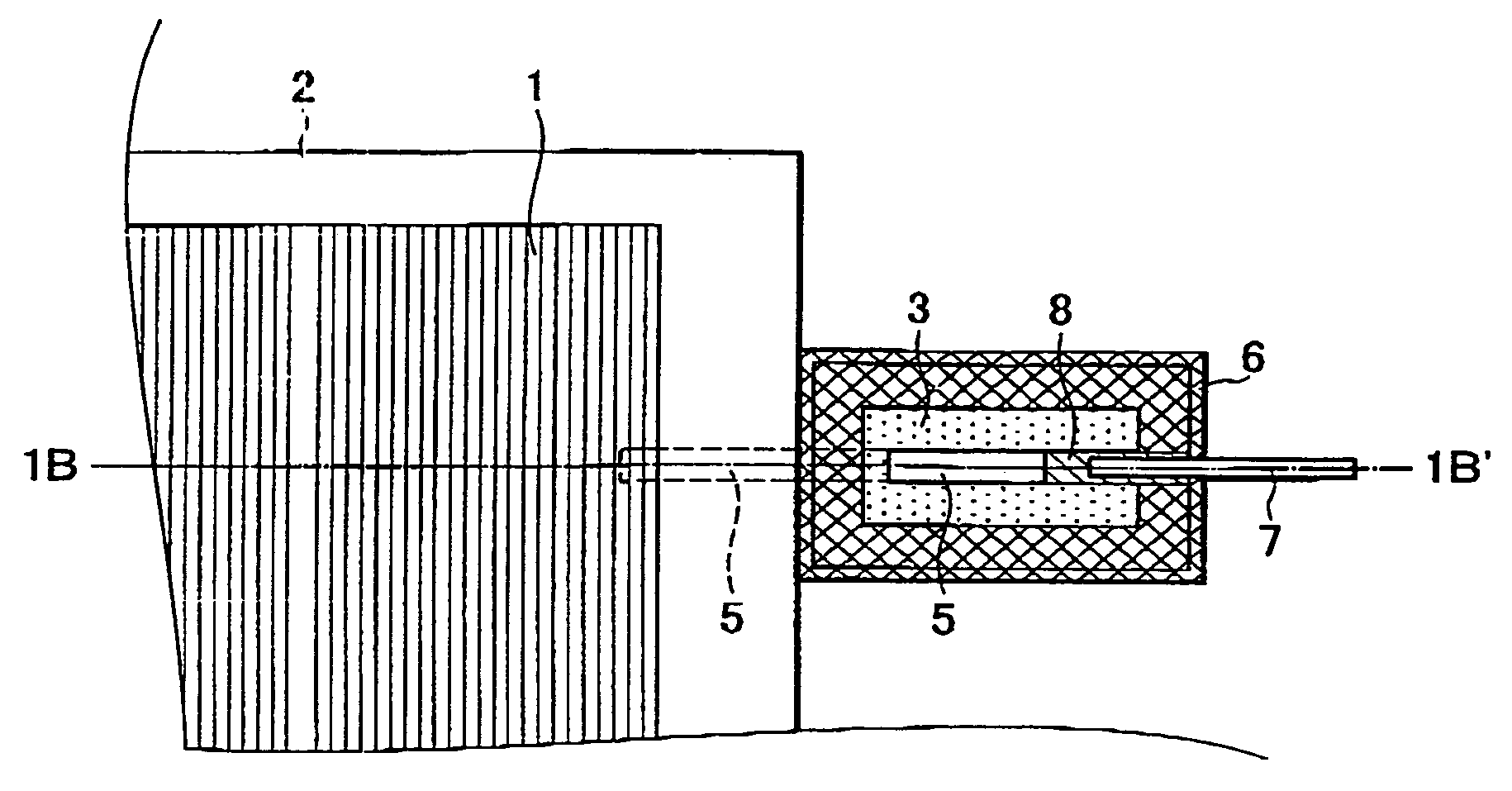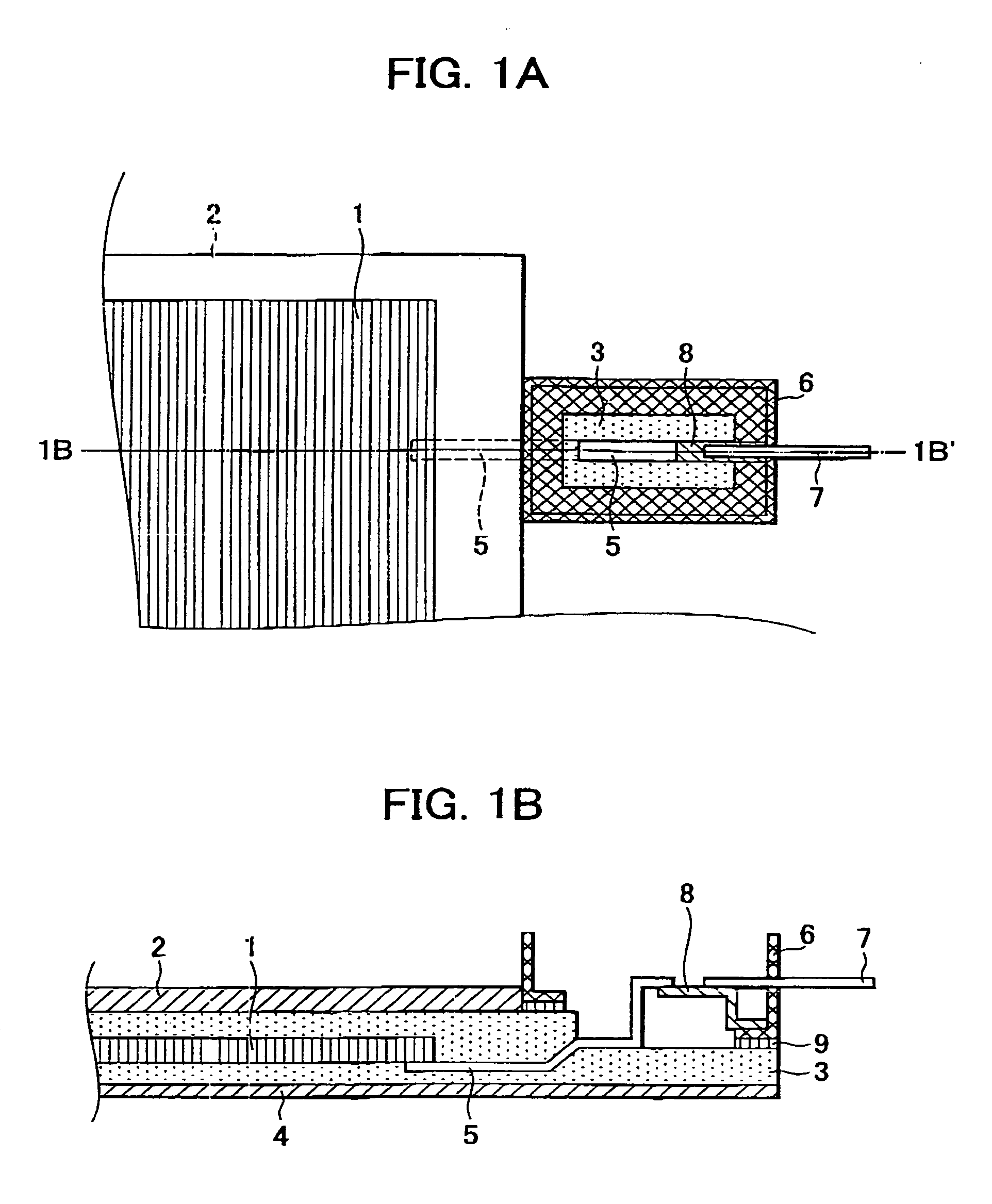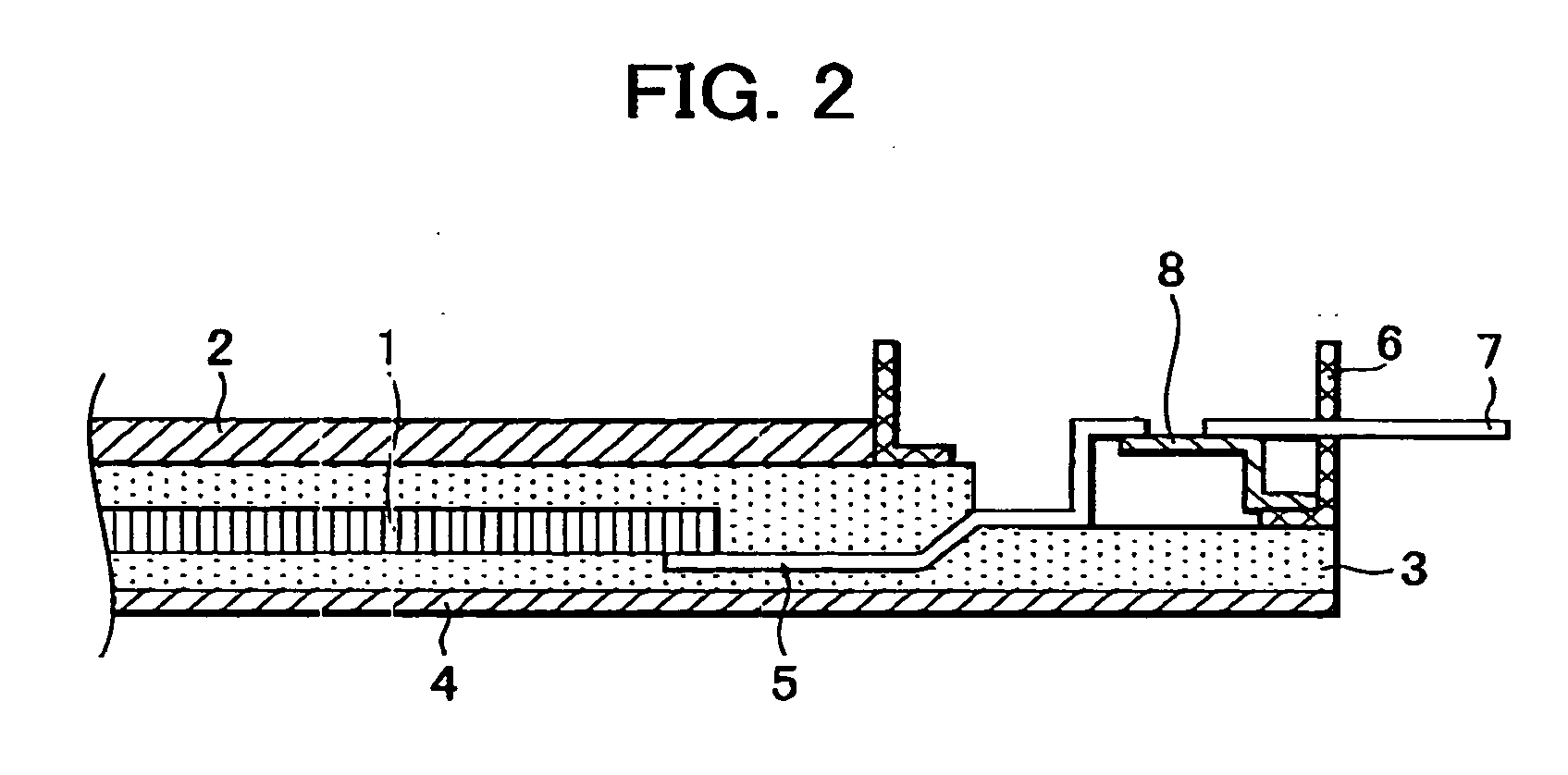Solar cell module having an electric device
a solar cell module and electric device technology, applied in the field of solar cell modules, can solve the problems of increasing manufacturing costs, complex methods, and unsuitable automation, and achieve the effects of low cost, high reliability, and simple manufacturing methods
- Summary
- Abstract
- Description
- Claims
- Application Information
AI Technical Summary
Benefits of technology
Problems solved by technology
Method used
Image
Examples
example 1
[0048] A procedure for manufacturing a solar cell module according to an embodiment of the present invention is described below with reference to FIGS. 5, 7A, 7B, and 8. The solar cell module includes a plurality of solar cell elements 1 (amorphous silicon solar cells) each including corresponding conductive substrates, rear reflecting layers, semiconductor photoactive layers, transparent electrode layers disposed in that order and further includes interdigital collector electrodes placed on the transparent electrode layers and a bus bar electrode connected to the comblike collector electrodes.
[0049] The solar cell elements 1 are connected in series. One of the lead electrodes 5 each including a tin plated copper sheet is soldered to an electrode connected to an end of the series of solar cell elements 1.
[0050] As shown in FIG. 8, the following components are stacked on a polyester film 84 having a thickness of 100 μm in this order: a first sheet 832 having a thickness of 0.4 mm, ...
example 2
[0055] A solar cell module of this example has a superstrate structure in which a glass sheet is placed at the top of a light-incident side of the module. This module can be prepared according to the procedure below using a tempered white glass sheet having a thickness of 3.3 mm instead of the fluorocarbon resin film 82 used in Example 1. In a sealing step, the following components are stacked: the tempered white glass sheet, a first EVA resin sheet having a thickness of 0.6 mm, solar cell elements connected in series, a second EVA resin sheet having a thickness of 0.4 mm, and a polyester film having a thickness of 100 μn. The resulting components are heated and then pressed with a vacuum laminator, whereby the solar cell elements are sealed. In the module, the second EVA resin sheet and the polyester film placed under the solar cell elements each have corresponding protrusions extending out of the tempered white glass sheet, and one of the lead electrodes is placed under the protru...
example 3
[0057] A solar cell module of this example can be prepared according to the procedure described below. Solar cell elements, EVA resin sheets, a fluorocarbon resin sheet, and a polyester film are stacked. One of the EVA resin sheets has a protrusion, and a housing functioning as a terminal box is placed on the protrusion. The above components are heated and then pressed with a vacuum laminator, whereby the housing is directly joined to the protrusion. That is, the housing is joined to the protrusion in the step of sealing the solar cell elements That is different from the sealing step of Example 1.
[0058] The solar cell module prepared according to the above procedure was investigated in the same manner as that of Example 1. The investigation result showed that the module had no defects. Since an adhesive is not used in a step of joining the housing to the protrusion, a process for manufacturing the module can be simplified.
PUM
 Login to View More
Login to View More Abstract
Description
Claims
Application Information
 Login to View More
Login to View More - R&D
- Intellectual Property
- Life Sciences
- Materials
- Tech Scout
- Unparalleled Data Quality
- Higher Quality Content
- 60% Fewer Hallucinations
Browse by: Latest US Patents, China's latest patents, Technical Efficacy Thesaurus, Application Domain, Technology Topic, Popular Technical Reports.
© 2025 PatSnap. All rights reserved.Legal|Privacy policy|Modern Slavery Act Transparency Statement|Sitemap|About US| Contact US: help@patsnap.com



